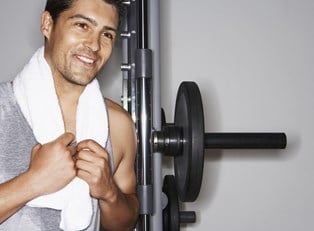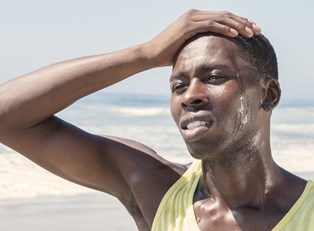Hyperhidrosis is a condition caused by an overreactive nervous system that causes patients to inexplicably perspire more than others. Hyperhidrosis typically affects the underarms or axillary regions, the palms of the hands, and the soles of the feet. This condition usually occurs symmetrically on the body, and symptoms may occur at least once a week, according to the Mayo Clinic. Many people struggle with hyperhidrosis without realizing their doctor may have answers.
Most doctors prefer to treat hyperhidrosis topically at first, because it is the least invasive form of treatment. Your doctor may recommend starting with a deodorant that includes an antiperspirant component. The following recommendations can be used to get the best results from your deodorant.
Use a combination of deodorant and antiperspirant.
These days, the term deodorant typically refers to a hybrid of both deodorant and antiperspirant that is designed to address two issues at once: body odor and sweat. Sweat alone is odorless, but when you perspire, the harmless bacteria that live on your skin metabolize the moisture, producing a foul-smelling biproduct commonly referred to as body odor. Because bacteria thrive in warm and moist climates, the excess moisture associated with hyperhidrosis puts you at a higher risk for having body odor.
Deodorants are cosmetic products that usually contain fragrance to cover up odor, but more importantly, they contain antibacterial components that neutralize your bacteria and thereby minimize the amount of odor that can be produced. Antiperspirants work to limit your body’s ability to release sweat by plugging your glands. The active ingredient in antiperspirants is usually a derivative of aluminum, and since it alters a bodily function, it is classified as an over-the-counter drug by the FDA.
Don't start with clinical strength deodorant.
Over-the-counter deodorant hybrids vary in strength and length of efficacy. Products that are stronger will contain higher active ingredient concentrations and may be more likely to irritate the skin. Others may use extended-release suspension technology and promise longer-lasting results. Several brands now offer clinical strength forms.
When you have hyperhidrosis, you may be tempted to pull the strongest product from the shelf, but your doctor may caution against it. Starting first with deodorants that are mild in strength and working up toward clinical strength concentrations is recommended. Doing so will help you locate an effective product that your skin can tolerate without irritation. Many patients with hyperhidrosis do ultimately settle with clinical strength formulas and prefer them to the prescription antiperspirants that tend to cause more rashes.
Apply deodorant at bedtime.
The best results are seen when deodorant and antiperspirant are applied at bedtime and then reapplied in the morning. Nightly applications are more effective than morning applications because they allow adequate time for the antiperspirant to move into your sweat glands and clog them.
Treat all affected areas.
The primary areas affected by hyperhidrosis are the palms of the hands, the soles of the feet, and the underarms. While it may conflict with societal concepts of how you ought to wear deodorant, you may want to apply it to your hands and feet in addition to the underarm. Doing so will help prevent daytime sweating in these areas even if you wash it off in your morning shower. Additionally, those who experience excessive facial perspiration can apply deodorant to the hairline and the back of the neck.



